Getting your Idea to the MVP
Table of Contents
This article is part of the series called Founders Guide which I’m writing currently to help early-stage founders tackle the problems they face during the first year of the startup.
All startups begin with an idea that can change the entire world. They are probably right but here's the kicker—20% of startups fail to celebrate their first birthday. So why do ideas with bubbling potentials and stirring impacts get squished on their way to success? Sometimes it's the lack of cash, but in most cases, an idea lacks a minimum viable product (MVP). An MVP is not a flagship product, it's no superstar. In fact, it's the bare bones, the least feature-packed version of what a fully developed product could look like. It's not going to go out in the world and make everyone take notice, but it's going to help you get a foot inside the door.
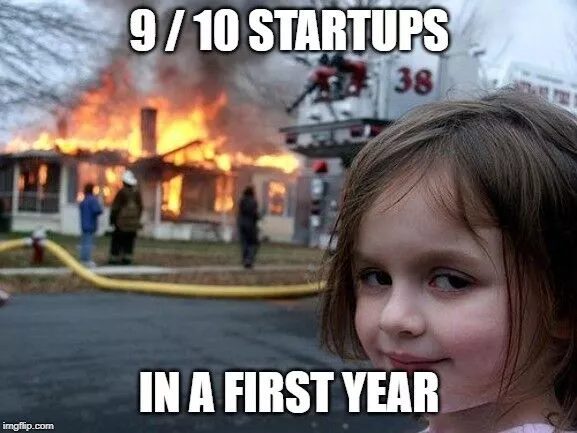
Getting to the MVP is important because it will save you tons of money and time in the initial days, help you build a connection with the early adopters and if you're really lucky, fetch you a nice investor.
When I started out I learned the lessons the hard way. So I'll go over the steps on how to develop an MVP as a founder and the things you need to follow and avoid while building it.
Validate the idea
Buying a domain and setting up a website is not a startup. A startup starts with an idea that can have a real impact on people. But how do you know if your idea will ever take off? You validate it with data and lots and lots of research. Here I'm going to go a bit conceptual and take a leaf out of the Japanese idea of ikigai. It basically helps you find value by segmenting life into four pillars—the thing you love, the thing you are good at, the thing the world needs, and the thing that will get you money. Put them in Venn diagrams and find the center where everything comes together—that's your ikigai.
You can probably guess where I'm going with this. Following ikigai is not just healthy for people in general, it's also amazing for early-stage startups. When you think of building an MVP, consider three aspects of the idea.
Understand the business side of the idea
You have to find how profitable and scalable the idea would be. Not all great ideas are successful because they either arrived too early or could never market themselves properly. Think of Vine—a great idea that was eventually turned into a multi-billion success by TikTok. Vine never succeeded because it failed to identify key marketable areas of its business (content creators) and ignored its scalable aspects (ad revenue). Don't be like Vine.
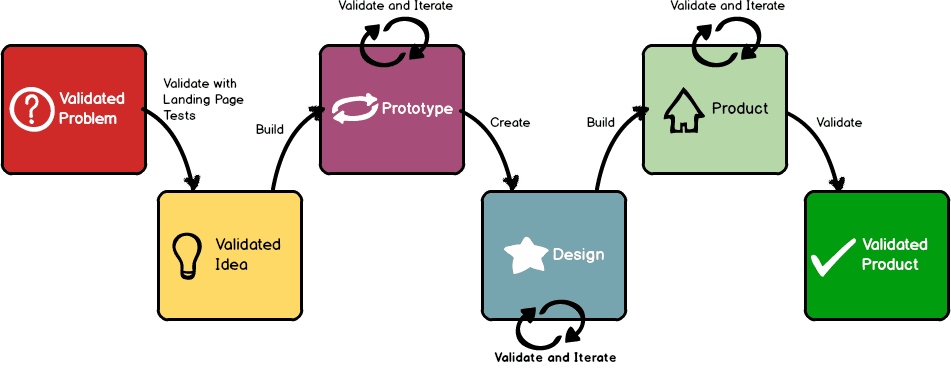
Understand the market
Once you know what your product can do, check what others are doing. Are you finding opportunities and plugging the gaps with better service or are you creating an entirely new category for yourself? Analyze how the market would treat your MVP and how you can one-up your competitors. This is how you avoid surprises and stay on the course.
Understand the users
The users are everything. Even if the market is ripe in terms of opportunity, there's no MVP or a successful business if the users aren't keen to try it out. Understand what features are required and wanted by the users. Do deep market research to get to the bottom of the data and unearth insights that will help you tweak the features and UX of the MVP. While market surveys are doing their job, personally go where your users are and see what they're talking about. Comb through G2, turn Reddit and Twitter threads upside down, and talk to people in events to know what your first few tasks would be.
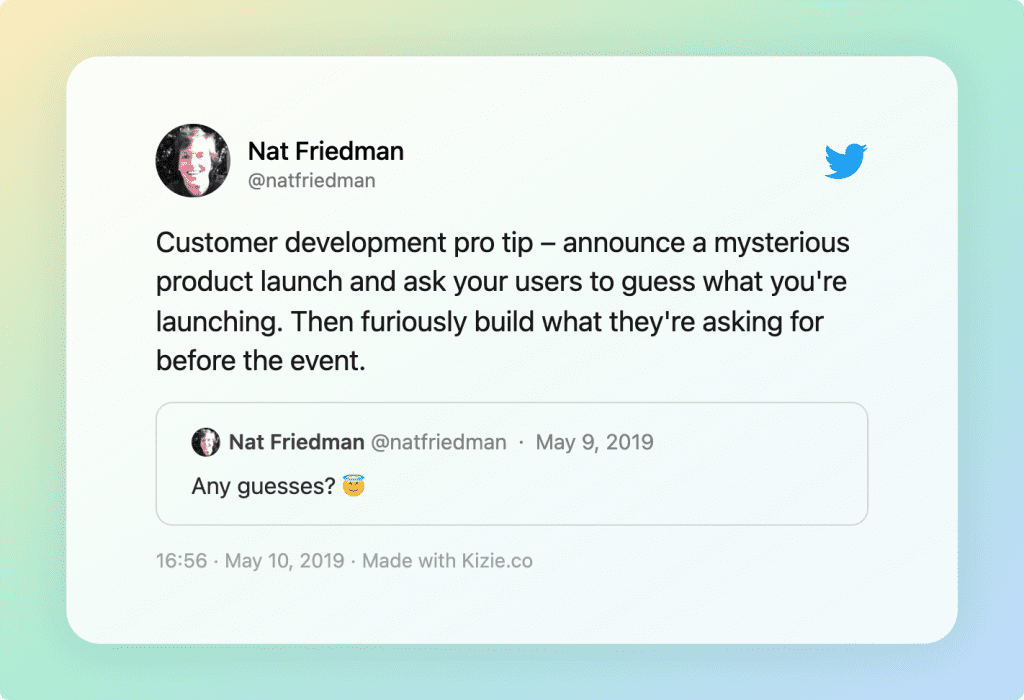
Flesh out the prototype
At this stage, you have the data to work on your app. Now focus on features and designs, also known as the prototype. In the world of product development, all features are created equal, but some features are more equal than others.
Find the benefits that are most important to the users, not the ones you would love to ship. While identifying core features, practice reductionism. Break down complex and diverse needs to the fundamentals and see how you can add more value to the user. One way I found which features to ship first was by using the MoSCoW technique. Create feature tables for must-haves, should-haves, could-haves, and will-not-haves and stick to the chart.
Speed to market is the all-important KPI for MVP so you should pick your battles carefully. Any feature that's not a must-have, goes back to the board.
Next, build a basic wireframe for the product. It doesn't have to be flawless, just functional enough for teammates and designers to visualize the features in the app. As long as you keep referring back to the first wireframe you build on the board, you'll not lose your way.
UX Research (optional)
UX research takes the basic wireframes of an MVP and brings context to them. Humanizing an app is one of the most challenging yet most overlooked aspects of product development and MVPs are particularly susceptible to it. But proper UX research can inflate your budget. If you don't have the money, it may not be a "viable" idea. In that case, just focus on the community stalking I mentioned earlier. Pick up patterns from user conversations and try to integrate the features the way they want.
Design
Now it's time to package your ideas to the users. While designing MVP, keep in mind the user flow. How your app opens, what features are displayed where, how they resolve user issues and how the user can find new benefits—incorporate everything in your design. You can do the wireframes and designs in-house, but I see lots of startups hiring freelancers for this task.
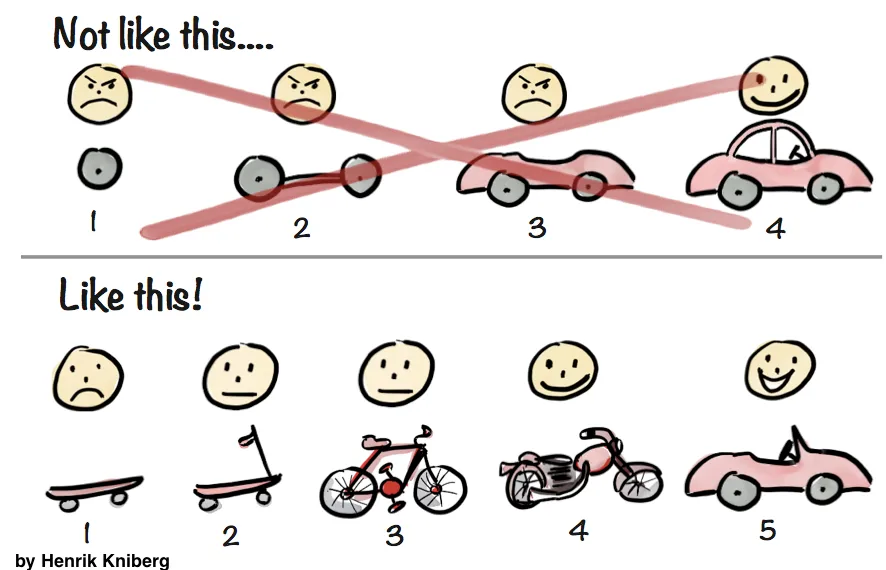
Freelance networks contain some of the most experienced and skilled web and app developers you'll ever come across. But hiring one can be tricky, especially for MVP wireframes. Extensively search portfolios, see their style of work, understand if they are going to be aligned with your project, and ask questions that spark meaningful interactions. While sharing your findings, share only what's needed for the MVP design. Good freelancers offer you speed and flexibility.
If you don't trust freelancers to do the job for you, then you have to do the heavy lifting. Just remember that MVP design is not about giving the early users the big picture, it's about focusing on the most important parts of that picture. If you don't have a full-fledged design, don't worry. Overengineering an MVP can do more harm than thinly written code that gets results.
Pre-development
Now you're warming up for the main dance. But wait! You still have to find people who'd be willing to try out your MVP. For me, creating a waitlist helped because it played with the scarcity mindset and let only the most qualified and dedicated testers through.
Waiting list
Most MVPs are not built to be used by thousands of users at the same time. They are to be tested in a controlled capacity. So it's better to know how many people are going to test it rather than overwhelming your product in the early days. Share your idea and drum up your value proposition to attract early adopters. Reach out to friends, your professional network, and common users based on your market research. Be it 100 or 1000, know the exact number by keeping them on a waitlist.
Trust me, the last thing your MVP needs is to be remembered for how buggy it was rather than how useful its features were.
Landing page
Who doesn't love a bit of razzle-dazzle? Tech founders rarely have the penchant for marketing but that shouldn't stop an MVP from getting a beautiful landing page. Even if it's generic, just create a landing page with crisp copy to show the benefits of your product and use it as a marketing asset to attract new testers.
Landing Page Builder Sites
- Webflow - Starts at $15 but grows pretty quickly depending on the features that you add.
- ConvertKit - Starts at $19/mo, solid tool. Is recommended by a lot of creators.
- LeadPages – Starts at $37/mo & no usage restraints. The more features you want, the more it costs.
- Unbounce – Starts at $50/mo for 5k visitors. You can do A/B Testing and get some powerful features when you switch to the more expensive package at $100.
Development
So you have attracted a few eyeballs with your landing page and waitlist, now it's time for app development. Code or no-code, that is the question.
Code vs No-Code
For a startup launching their MVP, no-code is a natural decision. And guess what? No-code MVPs actually work.
No-code MVPs are cheaper to make and faster to launch—two benefits a startup can never ignore. But MVPs with custom codes have loyal fans as well. With custom codes, you have a lot more control and scalability than no-code solutions.
I have found that the debate boils down to the objectives. If your no-code MVP takes off, you'll eventually migrate to custom codes to keep up with the user demands and functionality. But if the cost of maintaining a custom-coded MVP from day 1 is more than the profit of launching a no-code MVP and later migrating it, why not go for no-code? Sure you'll get a lot more functionality with coded apps, but do you need them for an MVP? Prioritize the benefits and you'll have the answer.
Different ways to build
Once you're over the debate of code vs no-code, you'll need to find ways to build your app. Based on your budget and the industry you're working in, you have three options.
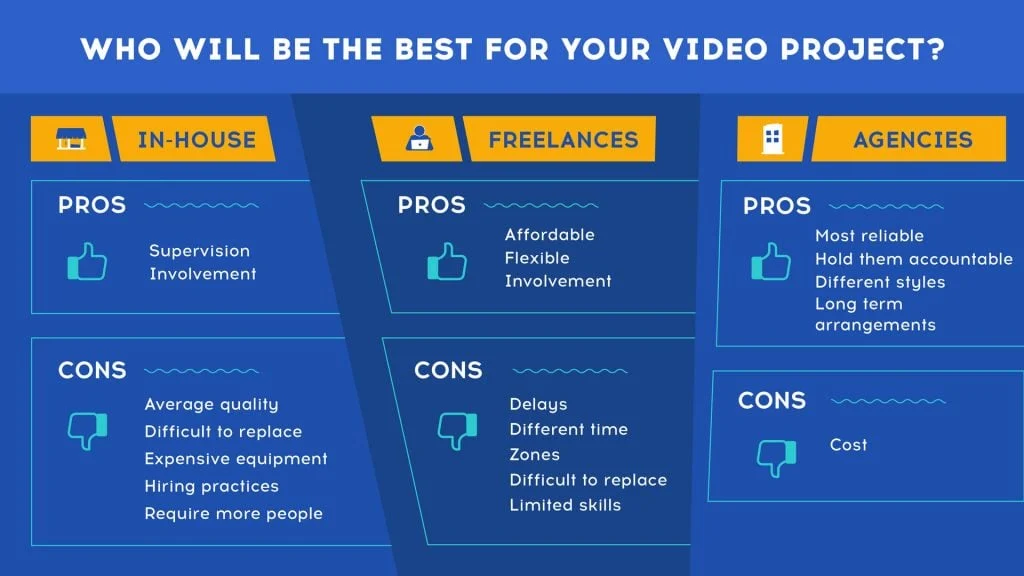
In-House
In-house app development is the most popular way to build MVP. The people know what to do, you have more control over the process and if all the elements come together, you'll have a shiny new MVP in no time. But that's a big "if". In-house development costs can shoot through the roof, obsession with perfection might creep in and lack of alignment in meetings can cause you significant delays. On top of that, if you don't have the developers already, you'll need to hire full-time app developers. Hiring as a startup founder is not always a pleasant experience.
Outsource
You can outsource your MVP development to an agency, which is becoming more popular in recent times. Agencies have the skillset and the workforce to build a functional product fast. But lack of alignment can again wreak havoc on your launch plan. Check their work and their reviews in independent portals and choose alignment over experience.
Freelancers
Hiring freelancers for MVP development can pay off very nicely. Unlike agencies, you get more personalized services and better communications from freelancers. But if the work gets more complicated, they might want to bail out. That's why it's important to hire freelancers recommended by people you trust and who can demonstrate a solid work history.
Essential modules
At this moment you should know who's going to build your MVP. Now it's time to chalk out the core elements of the app. Essential MVPs should have three essential modules:
Payments / Subscription
It might sound like a good idea to let early adopters try out features for free. After all, MVP is not about making money, and you would love to attract more testers by offering a free MVP. Except it's not as prudent as you think.
You need to test your payment infrastructure to see how the app handles subscriptions. SaaS MVPs cannot ignore payment UI and integrations so it's best to roll them out in MVP to analyze real-world use cases.
User Management
MVP signups are a sight to behold until logins don't work, authentication takes too long to load and testers leave without trying your product. Focus on user management. From password management and custom UI for guests and authenticated users to user blocking, everything needs to flow nicely.
Marketing Automation
MVPs, despite having a few early adopters, need to be marketed. Automated marketing often comes as a part of the broader CRM solution so you can tweak your process along the way. Generally, it should have a robust demo section to keep onboarding smooth, a referral program to spread the news, a follow-up sequence for the unconvinced testers, and a cold outreach campaign to entice fresh users.
Releasing the product into the wild
You have the data, the design, the product, and the users. Now it's time to release it into the wild. The moment you do that, start recording feedback. Be extra curious about them and go out of your way to ask testers what they think of the MVP—the good, the bad, and definitely the ugly. Gather insights, set KPIs, and create product development plans for iteration. A few KPIs that you should measure are conversion rate, retention rate, NPS (run surveys for that), churn rate, lifetime value (LTV), and customer acquisition cost (CAC).
Your post-launch development cycles should be defined. Identify the goals for each cycle based on user feedback and use MoSCow to create a hierarchy of features. The cycles should have at least one meeting for a no-judgment, hardcore brainstorming session. Each meeting should end with key takeaways and the developments should be based on the meeting documentation. It might sound like a manifesto, but this is the way.
Once you release your MVP, be prepared for surprises. User upticks, nasty feedback, freeloaders, bugs, or worse, finding that your product doesn't fit the market—always anticipate the unanticipated.
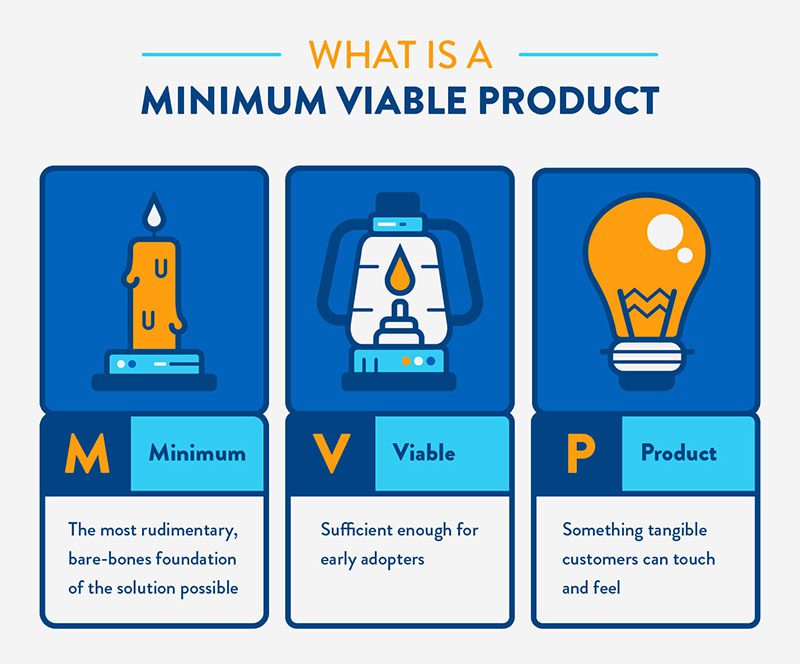
Building the MVP: things to remember
Still, on your way to getting the MVP, you might stumble a few times. I know I did. So here are a couple of nice-to-knows:
- Have a solid product strategy. Imagine spending thousands of dollars and working months on MVP only to find you're solving the wrong problem. Yep, horrible.
- Don't ignore the wireframes and the designs before you actually get to work. The prototype will help you stay on course.
- Align your sales and marketing teams. Plan together, implement together and enable both the teams to work on a singular vision.
- It's important to focus on both the "minimum" and "viable" aspects of the MVP. Obsessing over features will push the deadlines and increase bugs while keeping it too bare-bones would attract no one. You need to use an agile development policy to find a balance between features and post-launch development.
- Development teams will evolve. Accept that. With more pressure, come more responsibilities. If you have hired freelancers or agencies, consider getting a couple of in-house developers. If you're strictly in-house, find freelancers to delegate tasks.
MVPs aren't supposed to reflect the best version of your business or you. It just allows you to involve real-world users in developing the product of your dreams. And along the way, you might discover wonderful possibilities about your startup that might actually change the world.
-
ER
Your explanation about the MVP above is related to Software or App product. What if it is related to Non-Software Product? It is still related to Technology but more to Hardware or simply a new tangible Tech product; a Cell Phone or a Machine Wash or a Glove, etc. how is the MVP process? Thanks
-
Ruby
Great insights on developing an MVP for early-stage founders. It’s crucial to focus on validating the idea, understanding the business side, and researching the market and users. The steps outlined for building the MVP, from prototyping to releasing the product, provide a solid roadmap for startup success. The advice on choosing between code vs no-code development and building essential modules is practical and actionable. Overall, a valuable guide for navigating the complexities of MVP development. Keep up the good work!
-
Anonymous
Wow! I really appreciate this. Thank you 😊
-
Anonymous
Thanks for the article, was a nice read
